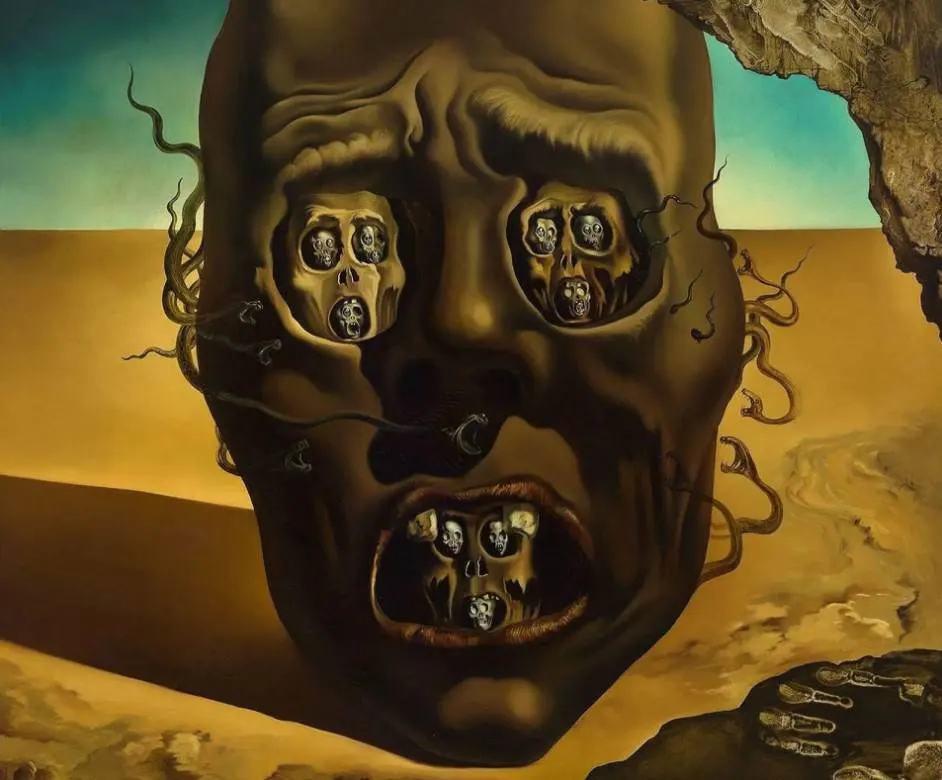Art has the ability to express every sense of emotion imaginable. This includes instilling a sense of fear into the viewer that can linger for an extended period of time.
Scary paintings have been produced for a wide variety of reasons since the Middle Ages, but the most gruesome examples emerged during the Renaissance era.
Since then, there have been a wide variety of artists who produced terrifying pictures, sometimes for reasons we’re not exactly sure about.
In this article, you’ll discover some of the most famous scary paintings ever created in the history of art.
1. The Garden of Earthly Delights – Hieronymus Bosch
- Date created: 1490-1510
- Dimensions: 205.5 × 384.9 centimeters (81 × 152 inches)
- Location: Prado Museum, Madrid, Spain
The Garden of Earthly Delights is the most famous painting by Hieronymus Bosch (1350-1516), a man who is known for his peculiar works of art. This work doesn’t especially have a scary-sounding title, but it’s the right panel of this triptych panel that makes it particularly gruesome.
While the left panel depicts the Garden of Eden and the central panel everything that people indulge in on Earth, the right panel depicts a hellscape that comes straight out of a nightmare. The damned souls are waiting to get tortured with some remarkably creative devices after being sent to this place of eternal damnation.
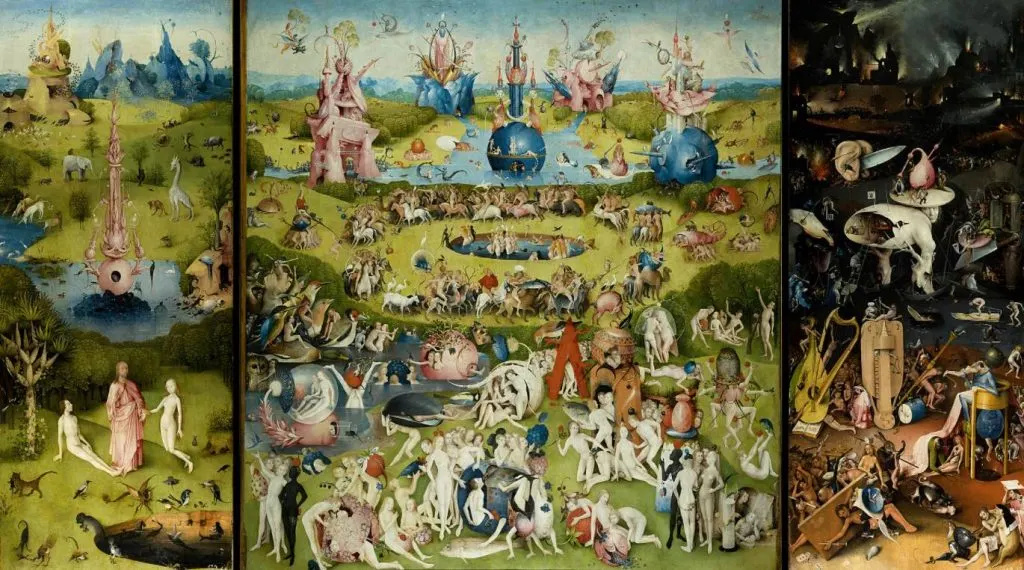
2. The Triumph of Death – Pieter Bruegel the Elder
- Date created: 1562
- Dimensions: 117 × 162 centimeters (46 × 63.8 inches)
- Location: Prado Museum, Madrid, Spain
The Triumph of Death is a painting by Pieter Bruegel the Elder (1525-1569), a Flemish artist who stepped into the footsteps of Bosch during the 16th century. While many of his paintings don’t nearly feature the same amount of scary elements as those of Bosch, this work can definitely hold a candle to it.
Numerous people can be seen slaughtered in the foreground and the scorched Earth is barren and lifeless as far as the eye can see. The legions of skeletons are about the eradicate the few living people left in this extremely horrible place full of death.

3. The Crucifixion of Saint Peter – Caravaggio
- Date created: 1601
- Dimensions: 230 × 175 centimeters (91 × 69 inches)
- Location: Santa Maria del Popolo, Rome, Italy
The Crucifixion of Saint Peter is a painting by Caravaggio (1571-1610) that graphically depicts the upside-down crucifixion of Saint Peter. It was completed in 1601 and on display at the Cerasi Chapel along with the “Assumption of the Virgin Mary” by Annibale Carracci and the painter’s other work titled “The Conversion of Saint Paul.”

One of the first leaders of the Christian church is already nailed to his cross and he has an agonizing grimace on his face. His cross is being hoisted up which will further increase the agonizing pain that the condemned had to endure during this particularly terrible execution method.
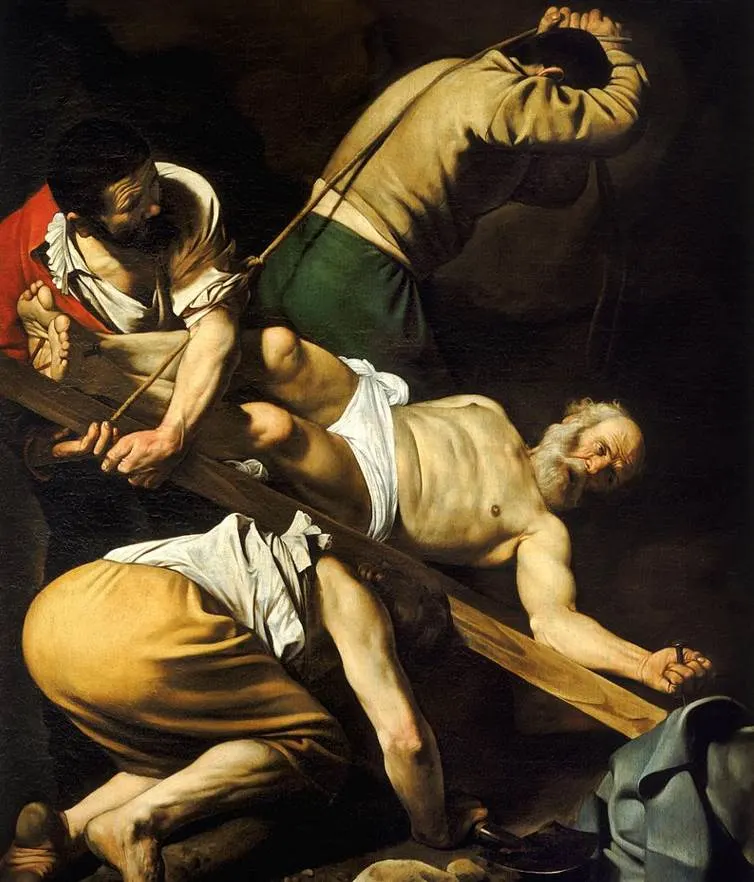
4. The Anatomy Lesson of Dr. Nicolaes Tulp – Rembrandt
- Date created: 1632
- Dimensions: 216.5 × 169.5 centimeters (85.2 × 66.7 inches)
- Location: Mauritshuis, The Hague, Netherlands
The Anatomy Lesson of Dr. Nicolaes Tulp is a painting by Rembrandt van Rijn (1606-1669) which graphically depicts an anatomy lesson conducted on the arm of a deceased person. Tulp was the city anatomist in Amsterdam and the people watching were members of the city’s Guild of Surgeons.
The Dutch artist earned handsomely from the depicted people because they paid to be included in this terrifying group portrait. This painting is especially scary considering the fact that the dead man was a criminal who was executed just a little bit earlier for the crime of armed robbery.

5. The Nightmare – Henry Fuseli
- Date created: 1781
- Dimensions: 101.6 × 127 centimeters (40 × 50 inches)
- Location: Detroit Institute of Arts, Detroit, United States
The Nightmare is the title of a painting by Henry Fuseli (1741-1825), a Swiss artist who spent most of his life living and working in Britain. Many of his paintings are related to the supernatural and occult and because of this, he became a major influence on many artists of future generations.
As the title of the painting suggests, art historians believe that the world depicts a sleeping woman who is having a dream. It appears as if the things she is dreaming about are also visible in this fascinating work of art. People at the annual exhibition of the Royal Academy in 1782 were shocked by this painting, and it’s easy to understand why.
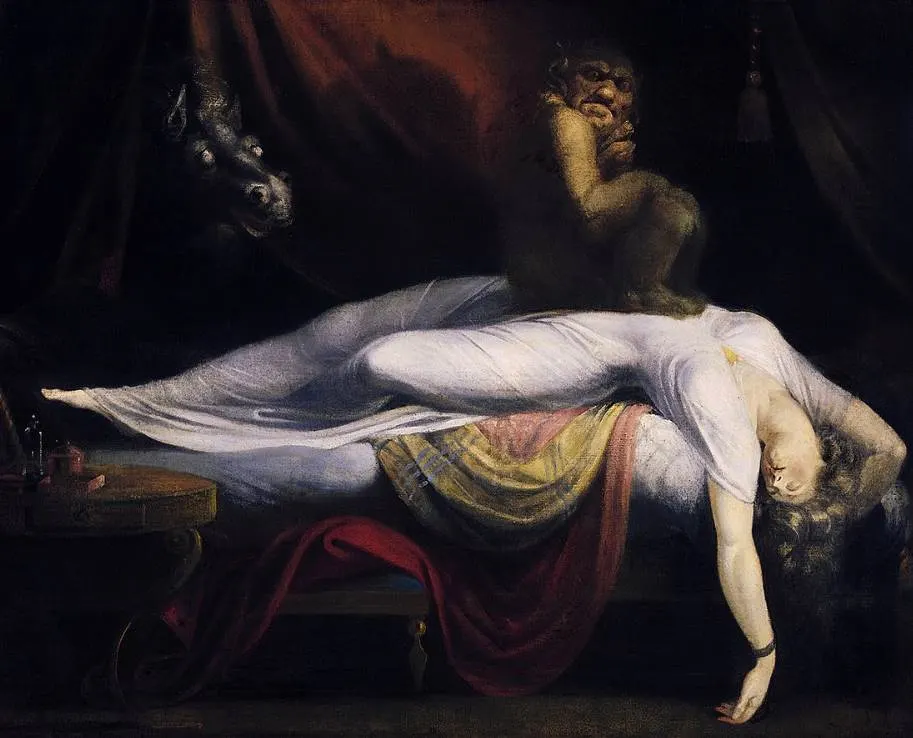
6. The Massacre At Chios – Eugène Delacroix
- Date created: 1824
- Dimensions: 419 × 354 centimeters (164 × 139 inches)
- Location: Louvre Museum, Paris, France
The Massacre At Chios is one of the many monumental paintings in the oeuvre of Eugène Delacroix (1798-1863), the leading French artist during the Romantic era. It’s one of several works of art that were inspired by the Greek War of Independence during the early 1820s.
The smoke can be seen on the battlefield in the background as a group of Greek people are being controlled by Ottoman forces. Several are wounded and dying and a baby is clutching onto the breast of his dead woman in the bottom right corner. It graphically depicts the horror of this tragic event in human history.

7. Saturn Devouring his Son – Francisco Goya
- Date created: 1819-1823
- Dimensions: 143.5 × 81.4 centimeters (56.5 × 32 inches)
- Location: Prado Museum, Madrid, Spain
Saturn Devouring his Son is the title of a scary painting by Francisco Goya, the leading Spanish artist during the Romantic era. It’s one of the 14 black paintings that he painted on the walls of his own house and they provide some insight into the dark thoughts of the artist during this period in his life.
Francisco Goya (1746-1828) became a Spanish court painter in the late 18th century but his career took a remarkable turn when he became deaf due to an undiagnosed illness in the early 1790s. His outlook on humanity only became gloomier following the Peninsular Wars which he experienced firsthand.

8. The Scream – Edvard Munch
- Date created: 1893
- Dimensions: 91 × 73.5 centimeters (36 × 28.9 inches)
- Location: National Gallery, Oslo, Norway
The Scream is the title of several paintings by Edvard Munch, one of the first artists in history who painted in the Expressionist style. This work became the symbol of the Expressionist movement and the most iconic expression of human anxiety and despair ever painted.
The scary part of this work is that it was something that Edvard Munch (1863-1944) experienced himself. He mentioned that he witnessed a scream from nature as he was walking on a hill near Oslo. That’s why the German title of this work was “Der Schrei der Natur” or “The Scream of Nature.”

9. The Man of Sorrows – James Ensor
- Date created: 1891
- Dimensions: 20 × 15 centimeters (7.9 × 5.9 inches)
- Location: Royal Museum of Fine Arts Antwerp, Antwerp, Belgium
The Man of Sorrows is a very small but extremely scary painting by James Ensor, one of the most famous Belgian artists in history. It’s believed to depict the artist’s interpretation of Jesus Christ and was likely inspired by a 15th-century painting by Early Netherlandish artist Aelbrecht Bouts (1452-1549).
James Ensor (1860-1949) was a Symbolist artist who developed a unique style in the late 19th century. He was often inspired by the masks that were sold in his mother’s souvenir shop in Ostend. This painting depicts the bleeding face of Jesus Christ in combination with a mask from the Japanese Noh theatre, a scary combination indeed.
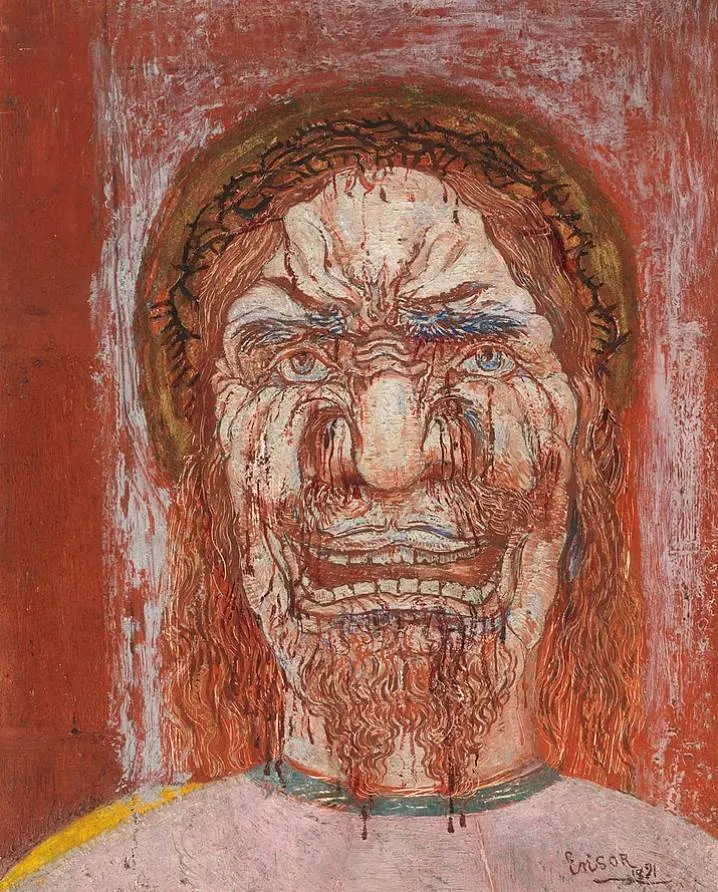
10. The Face of War – Salvador Dalí
- Date created: 1940
- Dimensions: 64 × 79 centimeters (25.2 × 31.1 inches)
- Location: Museum Boijmans Van Beuningen, Rotterdam, Netherlands
The Face of War is a painting by Salvador Dalí that was completed when the artist was living in California, United States. He had just witnessed the Spanish Civil War (1936-1939) followed by the outbreak of World War II in 1939 and painted this remarkable work of art which appears to depict the face of a corpse.
The face is located in a desert landscape and features a grimace that breathes agony. Snakes can be seen on both sides, ready to nibble away what’s left of this deceased human being. The eyes feature replicas of the face, most probably into infinity.
